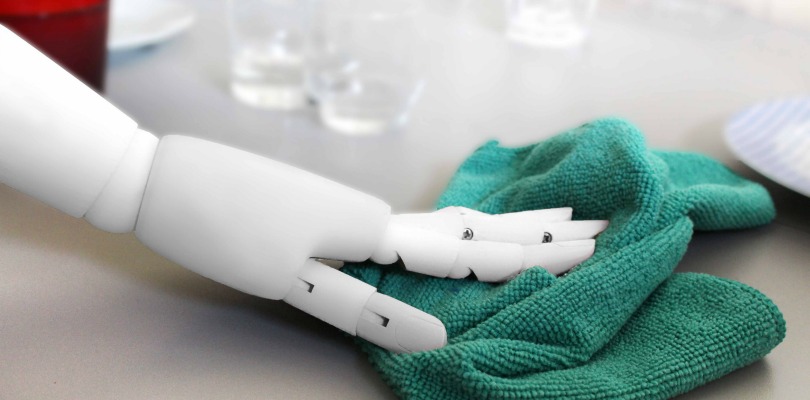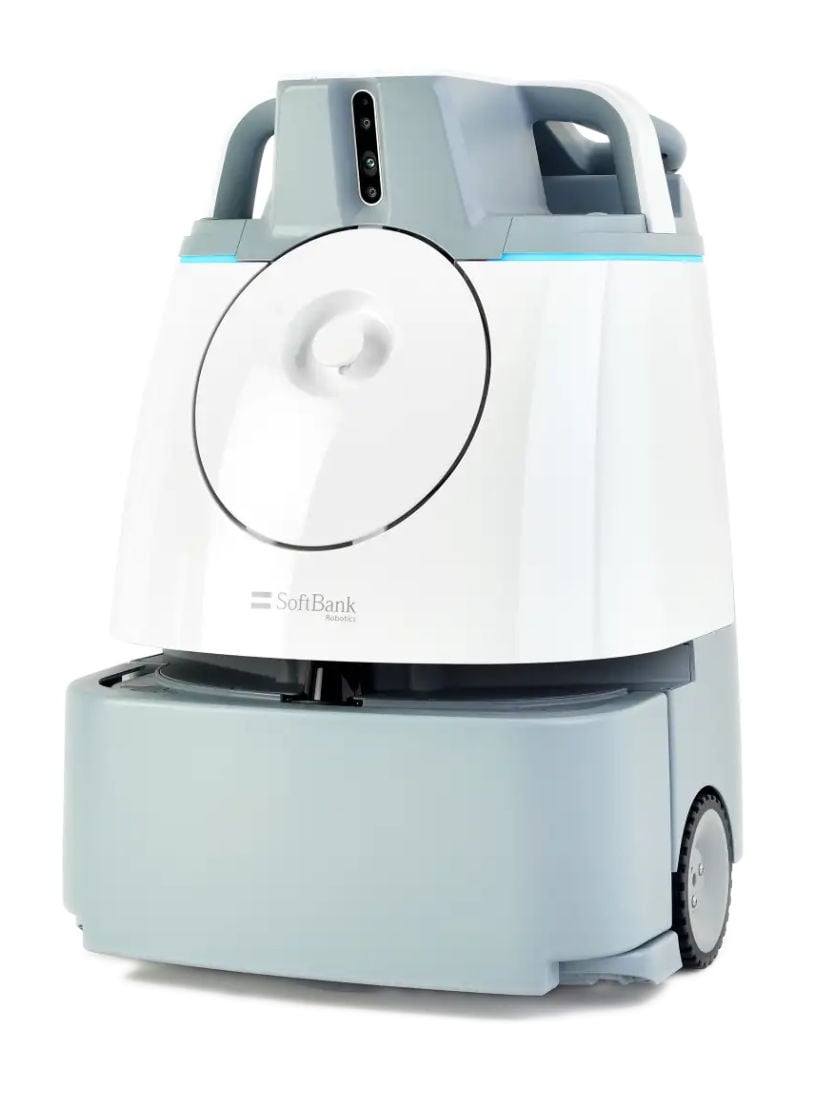For labor-intensive industries, manual or repetitive work is a huge part of their operations — and their labor challenges. That’s why so many business leaders are increasingly relying on technology solutions to ensure this work gets performed efficiently and improved upon over time.
Automation is one such tool that is radically transforming how businesses operationalize their services. By some estimates, nearly one-third (31%) of all businesses have fully automated at least one function, and the global cleaning automation market is expected to have an over 20% compound annual growth rate until 2034.
All of this suggests that your competitors are using service automation — and often using it as a differentiator to maintain a strong profit share. In other words, automation is no longer a “nice to have,” but a critical asset that today’s business leaders need in order to maintain, and eventually exceed, pace with their competition.
In this article, we survey today’s service automation landscape and share some of the most powerful use cases you can leverage to outperform the competition.
Service Automation, Explained
Service automation describes the process of using technology-based tools to streamline the delivery of a service. Automation helps deliver consistency across the cleaning experience and, in some cases, helps simplify the work your direct labor needs to complete. It doesn’t necessarily mean automating the service itself — although savvy companies looking to more effectively use their labor base are automating cleaning and maintenance-related tasks as well.
The High-Level Advantages of Service Automation Adoption
The adoption of automated solutions is accelerating for good reason: a well-tuned automation strategy can make decision-makers’ lives easier by driving multi-faceted value with minimal handholding from management. Key value drivers from service automation include:
- From marketers to cleaning staff, automated solutions can take on monotonous work, odd-hour shifts, and unpleasant tasks, freeing up human staff for other responsibilities (and even boosting morale).
- In the face of chronic labor shortages and difficulties filling key roles, service automation can help boost your staff's productivity, increase resiliency to staff shortages, and employ skilled human staff as efficiently as possible.
- For public-facing facilities, automated solutions can directly enhance brand perception through cleanliness and projecting a forward-thinking, tech-savvy image. For cleaning companies, automated solutions project a cutting-edge brand image to clients.
- Competitive pressure to adopt automated solutions will only grow. In this context, today’s automated solutions can deliver immediate ROI while nurturing a long-term organizational culture that is primed to proactively leverage new automated technologies as they mature.
So, how can you best take advantage of these benefits across your organization? Consider the strategies below for improving your company’s service automation game — and one big bonus for next-level automation.
Marketing Automation
Marketing automation is all about simplifying the process of sending sales content to your target audience at the right time. It turns out that making the sale is all about timing.
Benchmarking data consistently indicates that automated email messages generate more revenue than traditional messages — as much as 320% higher. Email automation also converts 2.5 times better than mass-send messages. This is because you’re sending messages when they are most relevant to your email recipients, not when you are ready.
Schedule Automation
While an Outlook calendar or Excel spreadsheet can support the job of scheduling work, schedule automation tools can take this task largely off the manager’s shoulders. Software tools support around-the-clock booking to secure more regular work.
Many of these solutions send automated reminders to cleaning staff and clients to limit missed bookings and their associated costs. Some tools also automatically send out paperwork for clients to complete prior to the job, which helps reduce human error and time spent corresponding with customers.
Work Order Automation
If you’re managing jobs that may change from day to day, work order automation can get your employees started without delay.
Work order automation prevents managers or employees from overlooking new tasks. These software solutions may automatically send tasks or reminders across the chain of command to the right individual and keep those tasks on the to-do list until they’re addressed.
Automating work orders also simplifies the cleaning process by providing customers with a quick status report as requested. Plus, managers can gain insight into all work orders in process at a given moment, more easily track job completion, and resolve issues in real-time.
Accounts Payable Automation
For many businesses, collecting and dispensing payments are among the biggest time-consuming activities they face. Automating these processes can save time spent moving data from paper to spreadsheets, reduce the risk of human error, and improve customer and employee satisfaction.
Whether you’re launching a recurring billing cycle or taking payments on the spot, invoice automation can streamline client payments. In some cases, completing an invoice may trigger the process of requesting a review or other feedback, tying job completion to your marketing automation.
Cobots and Cleaning Automation
Cobots (shorthand for collaborative robots) are one exciting example of service automation that is emerging quickly in the market. Some estimates anticipate that collaborative robots will represent around 10% of total industrial robot sales by 2025 as a result of the exponential growth in demand.
As their name suggests, collaborative robots are designed to work in partnership with humans — augmenting and enhancing their capabilities as opposed to replacing them outright. Compared to large, manufacturing robots, cobots are typically equipped with additional safety measures which allow them to identify, respond to, and work in close proximity with humans.
A great example of cobots in action is commercial cobot vacuums. Built on an intuitive and dynamic AI platform, our vacuum cobot autonomously cleans soft-floored commercial spaces. Commercial cleaning workers are estimated to use vacuum cleaners between one to three hours every day, which means most, if not a majority, of their shift is spent vacuuming.
Leveraging cobotics to accomplish time-consuming activities, such as vacuuming, offers a few key advantages for labor-intensive industries, such as building and cleaning service contractors.
- Round the clock performance. Because cobots can work safely alongside staff and customers, businesses can run them at any time of the day with minimal interruption. That also means cobots can operate when human staff aren’t available like holidays.
- More consistent and higher-quality performance. A common byproduct of being strapped for human cleaning resources is that your teams need to accomplish more in the same amount of time. Cobots can alleviate workloads by taking on time-consuming tasks, such as vacuuming and dust mopping, which allow their human counterparts to address other responsibilities required to meet SOPs.
- Data-driven proof of service. Real-time performance data and analytics — including run-time utilization and floor coverage — give business leaders insight into places where they can further improve their existing operations and help quantify return on investment.
The Business Imperative Behind Cleaning Automation
Given the time and money-saving benefits that come through automating business tasks, it’s no wonder that many organizational leaders are looking to achieve the same with cleaning. That said, it’s not uncommon for leaders who are ready to adopt to face resistance from other stakeholders inside the business. For building service contractors, much of the hesitation comes from how the industry has historically operated. Benchmarks for success have been primarily tied to labor productivity, processes and procedures — all parts of the business that service automation would disrupt.
Kevin Barton, President of Aviation and Janitorial Services with Flagship Facility Service, put it best in his recent piece for ISSA Today magazine: “Our operations may not be defined by technology today, but it is the future of how we operate.”
While the COVID-19 pandemic may have accelerated the use of service provider technology, it’s become clear in the years following that service automation is here to stay. The business reality that today’s service providers face is an exciting one, rife with opportunity for those that are not only ready to adopt these solutions but center their business strategies around them.
Contact SoftBank Robotics today to speak with one of our automation experts.
Key Pillars for the Effective Automation of Services
From marketing to cleaning, the secret to a successful automation strategy is a systematic approach to initial adoption and post-deployment support. Most organizations have relatively limited experience with automated solutions, and proactive preparation, integrated training, and hands-on support are all crucial for unlocking the potential value of any automated solution.
For example, Softbank Robotics offers a comprehensive service robotics program designed to maximize uptime of the autonomous solution, including:
- Deployment support and onsite service and training.
- Technical support, including always-on resources.
- An integrated repairs and replacement program.
- A real-time dashboard with automated reporting to help track progress and quantify ROI.
Learn more about the only service robotics program that successfully drives adoption.








